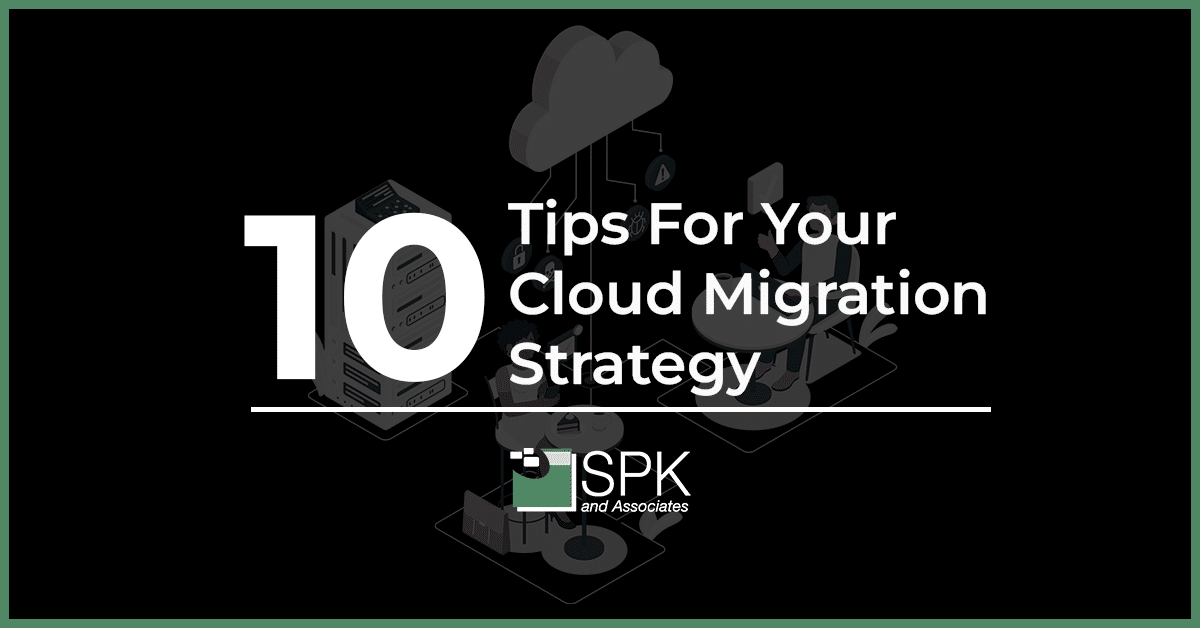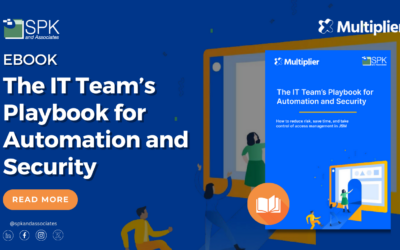Considering cloud migration to strengthen and grow your current on-prem capability? This blog is designed to help you identify a cloud migration strategy for your business.
The cloud has become an essential element of digital transformation in businesses of all sizes. Gone are the days of time delays due to hardware delivery, software configuration and limited storage space. The cloud allows businesses to easily scale to size as needed, and more importantly – at pace. But simply “switching” age-old processes from on-prem to the cloud isn’t that simple. It requires a well-considered approach to maximize your business potential.
What is a cloud strategy?
There are many drivers behind a company wanting to leverage the cloud. They could be focused on performance and scalability, or wanting to migrate away from legacy hardware. Cybersecurity could be another as the cloud can offer many security-related products and services not readily available to traditional on-prem environments.
Cost is also a common driver. The subscription/pay-as-you-go model of the cloud can be very beneficial. Calculate how much your business is already paying for up-front capital costs and ongoing maintenance of data centers, infrastructure support (i.e power, cooling, real estate costs), and so on.
Lastly, the cloud is commonly used as part of a comprehensive disaster recovery solution.
A cloud strategy consists of taking all of these factors into account, comparing them with business priorities and budgets, and identifying the best cloud platform fit, i.e. hybrid (on-prem and cloud), multi-cloud (combination of cloud providers), single-cloud. It also defines how to use it including leveraging cloud-native services, optimizing applications for the cloud, and general cloud architecture.
Do you find yourself asking, “What is a cloud-first strategy?” Well, a cloud-first strategy is the vision. This means businesses stop creating on-premises and then migrate to the cloud. They change their vision to building their capabilities in cloud computing solutions first, and consider on-prem secondary.
Why is it important for businesses to have a cloud strategy?
Having a solid cloud strategy enables businesses to remain competitive by:
- Keeping infrastructure costs low;
- Leveraging cloud-only services which cut application development time;
- Avoiding supply chain and hardware sourcing issues that could cause project delays (think global chip shortages occurring right now);
- Reducing downtime and increasing IT infrastructure availability;
- Providing distributed applications around the world to any number of markets or number of customers.
What will happen to businesses that ignore cloud migration?
Some businesses may not realize the apparent savings in moving to the cloud. In fact, the lowest cost option is to do nothing at all and continue to use existing equipment and infrastructure. However, there is a hidden cost:
- Unhappy customers and employees who must deal with slow systems or high amounts of downtime;
- Increased IT support costs for legacy systems;
- Security vulnerability risks of legacy systems – typically these are no longer supported by their manufacturers.
Should a business move all its applications to the cloud?
No. There are many business situations where it is illogical to migrate an application to the cloud. Some examples of these include:
- Applications that require very high throughput to other systems;
- Legacy applications that don’t work well in routed or high latency networks;
- Applications that have strict licensing terms (e.g can’t run within a hypervisor, or license servers that require physical host IDs).
What challenges prevent cloud migration?
Change is difficult, and cloud providers are creating new products and services every day. It can be both challenging and overwhelming to consider cloud migration for businesses that lack the IT skills and experience to build cloud options.
There is also a common misconception that cloud data privacy and security are big concerns. The truth is quite the opposite. Cloud migration can enable enhanced security practices that are commonly not delivered in on-prem environments.
What is Amazon Web Services and why is it important?
Amazon Web Services (AWS) started its business early on by simply providing virtual machines that were remotely accessible.
Instead of running applications on-prem, businesses could forgo their purchases of new hardware and run their applications in AWS instead. This was a game-changer in terms of business economics. No longer did companies have to spend significant chunks of up-front capital for assets that would depreciate over a useful life of typically 3-5 years. Additionally, a common challenge of hardware procurement is that it lags behind the true business demand. From planning to procurement to installation to testing, this can quickly become many months of effort.
With AWS, new workloads can be spun up on-demand almost instantly. Businesses can also scale up and down as needed without additional infrastructure support like power and cooling.
AWS has continued their focus on providing not only hardware and compute-as-a-service but more importantly, higher-level software services such as the product AWS Beanstalk.
How AWS Beanstalk can support a cloud migration strategy.
Traditionally, an entire application stack consists of many components. Each needs its own setup:
- Hardware to run on;
- Operating system installation;
- Application server and monitoring;
- Deployment capabilities;
- Scalability.
With AWS Beanstalk, all of these components are taken care of for you – you simply provide your application code. These AWS high-level products and services allow businesses to focus on what’s important – rapid application development and providing customers a consistent, reliable experience with their application. No longer would businesses need to spend time and effort supporting a platform. They can simply utilise AWS services.
10 tips for developing your cloud migration strategy using AWS 2022.
At SPK we encounter many clients who have felt overwhelmed by cloud migration, both in understanding a new methodology and developing a robust strategy around that. If this resonates with you, follow these simple steps to get started:
- Identify key business priorities and objectives – Once defined, these need to be translated into system requirements.
- Plan realistically – Some migrations can be simple and straightforward with the right expertise and know-how. Others are more complex. Engage with the right IT expertise (either within your business or partner with an expert company) to address technical tasks, realistic timescales and budget.
- Plan for the long term – Considering your business objectives in the now is important, but also consider what your business objectives and long term vision are. Cloud migration can definitely support business wins in the near future, but a business considering its longer-term success now will have a long term competitive advantage from cloud leverage.
- Managing mindsets is key – New cloud products and services may dramatically change the way a business operates. Therefore, the business needs to be willing to adopt change and move away from traditional methods.
- Analyze your stack and your users – Thorough analysis pre-migration allows you to identify and address any problem areas. By understanding your stack in-depth, you will create a risk-proof pathway to success. Additionally, analysing user lists and permissions can prevent security risks further down the track.
- Data, data, data – We named it three times because it’s important. Make sure you know your data, how you manage it, and how you protect it from security risks. Take the opportunity to tidy up messy on-prem data before you migrate it to the cloud. Additionally, take the time to document the controls and processes that should be in place to protect your data.
- Prepare for regulatory exercises – If you are in a highly regulated industry, or a business subject to any audit requirements, ensure you have considered these in your strategy. This will help you define the what and the where of your migration.
- Know your language and security requirements – Cloud computing solutions like AWS Beanstalk are designed to make life easier for businesses. AWS Beanstalk provides added security by separating the cloud from local systems. It also supports a range of languages including Java, Docker, .NET and PHP.
- Start with a single application – Understand its requirements from a networking, performance, and security perspective. Applications with fewer integrations, and that are web-based are great candidates. Start small; learn, deliver it well and make incremental changes.
- Get expert support – Businesses can work directly with cloud providers and their support staff. However, this requires significant knowledge of the cloud platform, as well as the business application which is running on it. An alternative approach is to work with cloud partners like SPK, who are familiar with cloud platforms, cloud-first strategy and multi-cloud strategy.
Is cloud migration more effective in a small start-up or enterprise?
Large enterprises typically have very mature IT processes. Additionally, these include change control processes, approved vendor relationships, desktop and laptop domain policies, cybersecurity policies, and so on.
These mature IT processes can clash with the fast-paced, dynamic and easily customizable cloud.
An effective cloud migration strategy for larger enterprises means taking a pragmatic approach to existing policies and procedures. This is in comparison to a rigid approach which could be more costly in terms of poor employee productivity or ineffective cloud resource usage. Enterprises are more likely to find it helpful to outsource their cloud migration strategy and deployment, allowing them to focus on meeting the customer needs today, whilst experts prep their IT capabilities for the needs of tomorrow.
Smaller start-ups tend to have less mature IT processes and ways of working, meaning they tend to find cloud migration easier. However, they are also more likely to need expert support due to a lack of IT know-how and cloud experience.
Conclusion
It’s never too late to start your cloud migration strategy. By understanding your business objectives, both now and in the future, your business can achieve long term success and rapidly deploy applications through cloud computing.
With AWS Beanstalk, new workloads can be spun up on-demand almost instantly. Likewise, if businesses had excess physical hardware sitting idle, they still had to pay for costs related to power, cooling, and maintenance. They can’t “scale down” as easily as can be done in the cloud with tools like AWS Beanstalk.
Having the right expertise to define and deploy your cloud strategy is critical – regardless of business size. If you don’t have the right level of skills or expertise in-house, partner with IT experts like SPK. A great IT partner can support you in achieving your business cloud migration strategy with ease.
If you would like to learn more about our Cloud Advisory Services, click here. Or, if you would like to talk to one of our experts and start designing your cloud migration strategy for your business, you can contact us here.







